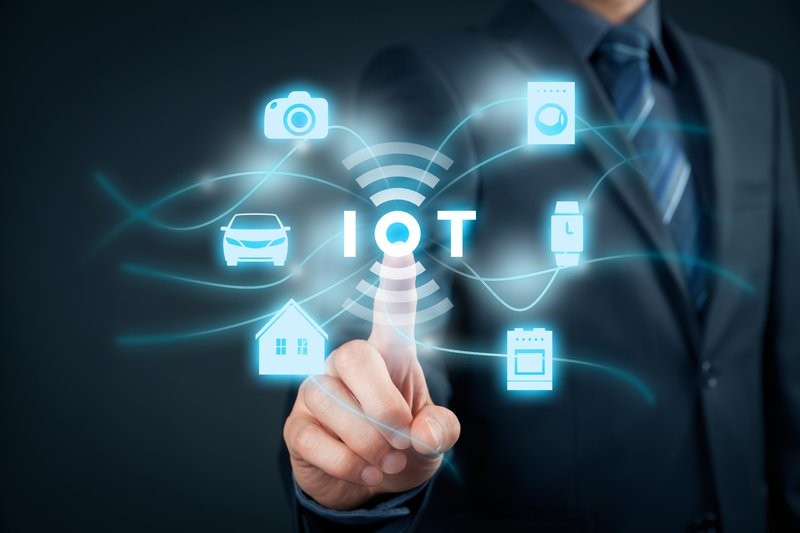The Internet of Things (IoT) is revolutionizing how we think about and use technology, but it’s not without its challenges. One of the biggest difficulties for many IoT networks is power: how to provide enough power to devices in the network so that they can perform optimally. This is where Power over Ethernet (PoE) comes in. PoE is a technology that uses Ethernet cables to deliver both data and power to connected devices. In this article, we’ll explore the benefits of Power over Ethernet and its role in enabling higher-power solutions on IoT networks.
What is Power over Ethernet?
Power over Ethernet (PoE) is a technology that allows electrical power to be carried by an Ethernet cable. This means that devices that require power, such as computers, can be powered through the same cable that carries data. PoE is a convenient way to provide power to devices in difficult-to-reach or hard-to-wire locations. It is also useful for powering devices that are moving, such as security cameras or Wi-Fi access points.
PoE requires special network hardware that can supply power over the Ethernet cables. This hardware is typically installed at central locations, such as wiring closets or equipment rooms. The power supplies send electricity down the Ethernet cable to a device, which then converts it back into DC power that can be used by the device.
Most PoE implementations use 48 volts of direct current (DC). However, some newer technologies use up to 60 volts. The amount of current provided depends on the specific implementation, but it is typically between 350 and 600 milliamps (mA).
The Different Types of Power over Ethernet
In the early days of Power over Ethernet (PoE), the IEEE 802.3af standard delivered up to 15.4W of power over two pairs of wires. This was enough to power devices such as IP phones, Wireless Access Points (WAPs), and pan/tilt/zoom (PTZ) cameras. But as the Internet of Things (IoT) started to take off, the need for more powerful PoE solutions became apparent.
The IEEE 802.3at standard, also known as PoE+, was released in 2009 and increased the maximum power delivery to 30W. This was enough to power devices such as video phones, high-powered WAPs, and multi-camera video surveillance systems.
In 2018, the IEEE 802.3bt standard was released, which increased the maximum power delivery to 60W. This is enough to power devices such as 4K TVs, virtual reality headsets, and industrial IoT sensors.
The latest standard, IEEE 802.3bu, is currently in development and will increase the maximum power delivery to 100W. This will be enough to power devices such as large LED displays, high-powered WAPs, and industrial IoT sensors with high data throughput requirements.
How Power over Ethernet Works
Power over Ethernet (PoE) is a technology that enables networked devices to receive power through the same cable that carries data. This allows devices to be powered without the need for a separate power source, making installation and management simpler and less expensive.
PoE works by sending electrical power along with data over twisted-pair Ethernet cabling. The power is sent using the unused pairs of wires in the cable, so it does not interfere with the data signal. PoE requires special equipment at both ends of the cable, including PoE-enabled network switches and adapters.
When used for IoT applications, PoE can provide both power and connectivity to devices such as sensors, controllers, and gateways. This simplifies deployment and reduces costs by eliminating the need for separate power cables or batteries. It also makes it possible to remotely manage and monitor devices, since they are all connected to the network.
The Benefits of Power over Ethernet
Power over Ethernet (PoE) technology enables devices to receive both power and data over a single Ethernet cable. This means that PoE-powered devices can be located anywhere there is an Ethernet connection, without the need for a separate power outlet. PoE also offers a number of other benefits, including:
1. Increased flexibility and easier installation: PoE eliminates the need to install separate power lines or AC outlets near each device. This makes it much easier to install PoE-powered devices in difficult-to-reach locations, such as on ceilings or in walls.
2. Reduced costs: By eliminating the need for extra wiring and AC outlets, PoE can save you money on your installation costs. In addition, PoE-powered devices often use less energy than their AC-powered counterparts, which can lead to lower energy bills.
3. Improved performance: Power over Ethernet delivers power more efficiently than alternatives like USB or Wireless power, which can result in improved performance from your devices. In addition, PoE can help reduce radio interference from nearby WiFi networks.
4. Greater scalability: Since PoE only requires a single network cable for both power and data, it’s easy to add additional PoE-powered devices to your network as your needs grow.
Power over Ethernet in the Future
As the Internet of Things (IoT) continues to grow, so does the demand for higher-power solutions. Power over Ethernet (PoE) is one technology that is being increasingly used to provide power to devices on an IoT network. PoE allows devices to be powered through the same Ethernet cable that is used for data connectivity, making it a convenient and scalable solution for powering IoT devices.
The future of PoE looks promising, as the technology continues to evolve and become more widely adopted. For example, the upcoming IEEE 802.3bt standard will enable PoE to deliver up to 100 watts of power, making it suitable for powering even more power-hungry IoT devices. In addition, new technologies such as Power over HDBaseT (PoH) are being developed that could further increase the power delivery capabilities of PoE.
As more and more IoT devices are powered by PoE, the technology will become increasingly important in ensuring reliable and efficient power delivery to these devices. With its convenient and scalable solution, PoE is well-positioned to meet the growing demands of the IoT era.

